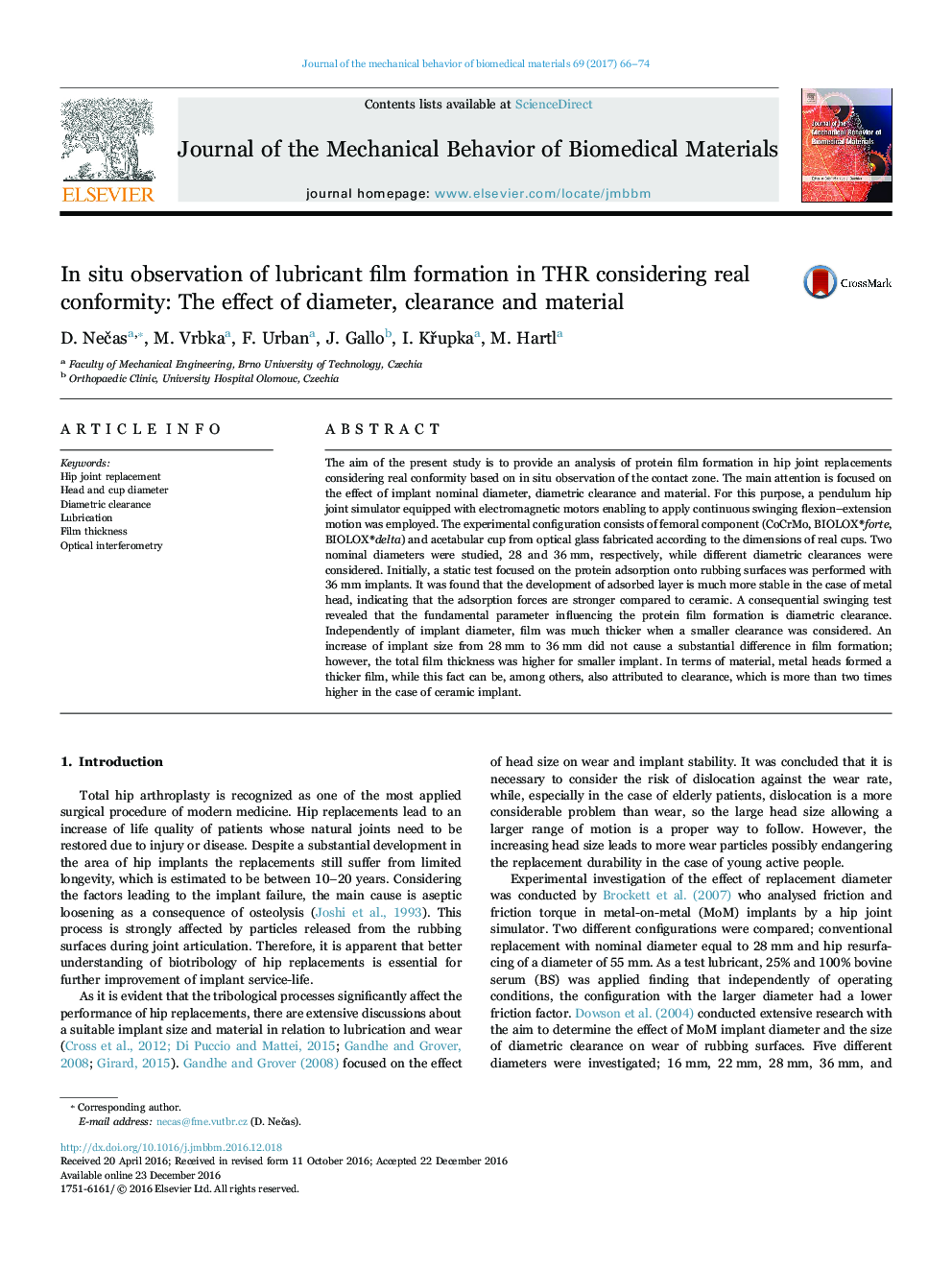| Article ID | Journal | Published Year | Pages | File Type |
|---|---|---|---|---|
| 5020632 | Journal of the Mechanical Behavior of Biomedical Materials | 2017 | 9 Pages |
Abstract
The aim of the present study is to provide an analysis of protein film formation in hip joint replacements considering real conformity based on in situ observation of the contact zone. The main attention is focused on the effect of implant nominal diameter, diametric clearance and material. For this purpose, a pendulum hip joint simulator equipped with electromagnetic motors enabling to apply continuous swinging flexion-extension motion was employed. The experimental configuration consists of femoral component (CoCrMo, BIOLOX®forte, BIOLOX®delta) and acetabular cup from optical glass fabricated according to the dimensions of real cups. Two nominal diameters were studied, 28 and 36Â mm, respectively, while different diametric clearances were considered. Initially, a static test focused on the protein adsorption onto rubbing surfaces was performed with 36Â mm implants. It was found that the development of adsorbed layer is much more stable in the case of metal head, indicating that the adsorption forces are stronger compared to ceramic. A consequential swinging test revealed that the fundamental parameter influencing the protein film formation is diametric clearance. Independently of implant diameter, film was much thicker when a smaller clearance was considered. An increase of implant size from 28Â mm to 36Â mm did not cause a substantial difference in film formation; however, the total film thickness was higher for smaller implant. In terms of material, metal heads formed a thicker film, while this fact can be, among others, also attributed to clearance, which is more than two times higher in the case of ceramic implant.
Related Topics
Physical Sciences and Engineering
Engineering
Biomedical Engineering
Authors
D. NeÄas, M. Vrbka, F. Urban, J. Gallo, I. KÅupka, M. Hartl,
